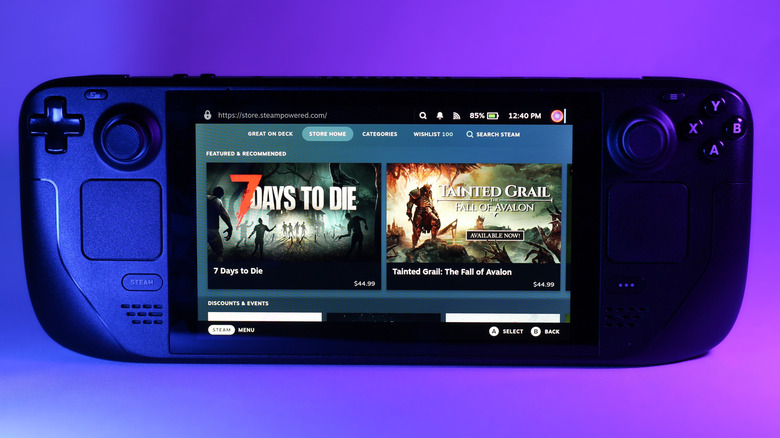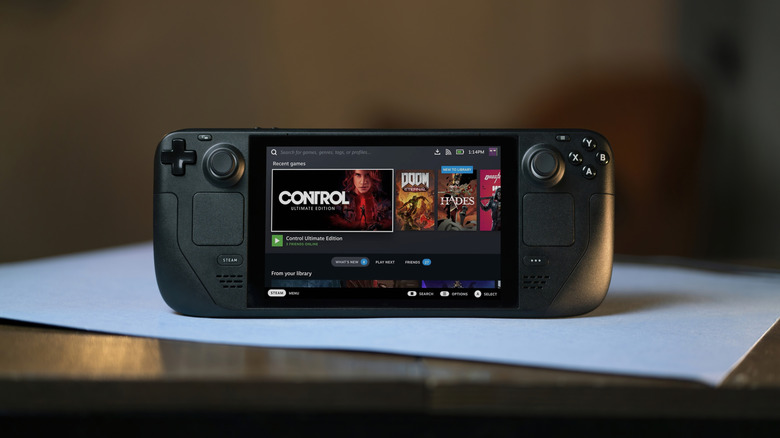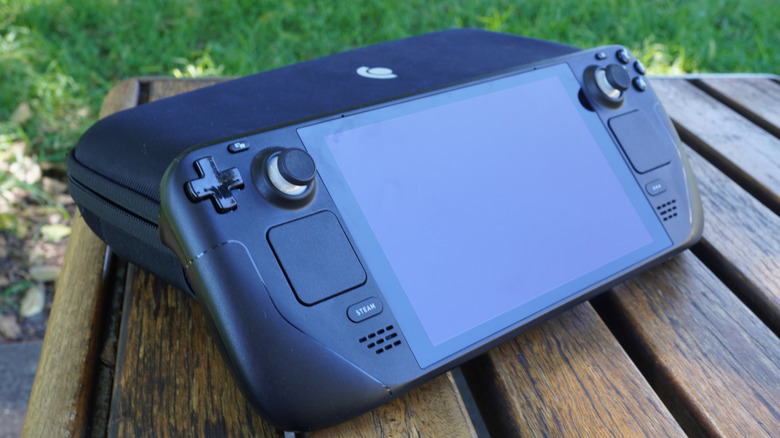The Steam Deck OLED Has One Huge Feature That The Nintendo Switch 2 Never Will
The Steam Deck OLED is a hulking handheld gaming console in both size and performance. It takes everything Nintendo did right with the original Switch and upgrades it, and even though there is a Switch 2 now, the Steam Deck OLED is still superior in one key aspect: the display.
The Switch 2, despite being Nintendo's most anticipated and expensive console in the company's history, has an abysmal display. You can argue the launch line-up wasn't great, or that the Switch 2 is just more of the same that the original Switch gave us, but you can't dispute the quality of the screen. Since the console launched, there have been complaints about the quality of its LCD screens. While rumors of a Nintendo Switch 2 OLED refresh began before the console launched, the lack of an OLED display was disappointing. But the primary concern with the screen has been performance. In a recent Monitors Unboxed video, the Switch 2 had the worst response time of all monitors tested — and it's even 50% slower than the original Switch's display.
Other issues with the display are worth noting, such as color, banding, low brightness for HDR content, and image ghosting, which everyone hates the most about their tablets. In comparison, the Steam Deck OLED's screen is a dream to play on. The display is bright, fast, and color-accurate. What's not to like?
Why the Steam Deck OLED display is special
The standout feature of the Steam Deck OLED is the OLED display. The 7.4" diagonal display is capable of 600 nits of brightness when playing standard dynamic range (SDR) games, but it shoots up to 1,000 for high dynamic range (HDR) content. This is the ideal brightness for HDR, making colors pop and emphasizing the contrast between the lightest and darkest parts of the image.
The Steam Deck OLED's display response time is also outstanding. Valve claims the Steam Deck OLED has a response time of less than 1 millisecond, and that checks out, according to Monitors Unboxed's testing. When comparing displays between the ROG Ally X, Switch, Switch 2, and the Steam Deck OLED, Valve's handheld stands head and shoulders above the competition. But why does a fast response time matter? A faster response time gives you a competitive edge in games, such as shooters, but it also minimizes motion blur and ghosting.
The Steam Deck OLED's biggest flaw is fixable
Because the Steam Deck OLED uses an OLED display, it is more vulnerable to burn-in than other screen types. Modern OLED displays are better at managing burn-in, but it can still happen, especially if you leave the console on a static image, such as the menu screen, for long periods. If burn-in does eventually happen to your Steam Deck OLED display, there is something you can do: replace the screen. It's easier and more affordable than you would expect.
Tech repair company iFixit gave the Steam Deck OLED a repairability score of 7 out of 10. It's one of the major positives of owning a Steam Deck console, and it makes replacing a screen very doable. The iFixit guide covers this in detail, but the best part is that you can remove the display from the top of the console, so you won't have to open it up and risk breaking the shell or tearing a ribbon cable. You can even buy the tools you need and the displays from iFixit for $104.99 and $154.99 for the 512GB and 1TB models, respectively — the latter is more expensive due to premium anti-glare etched glass.


